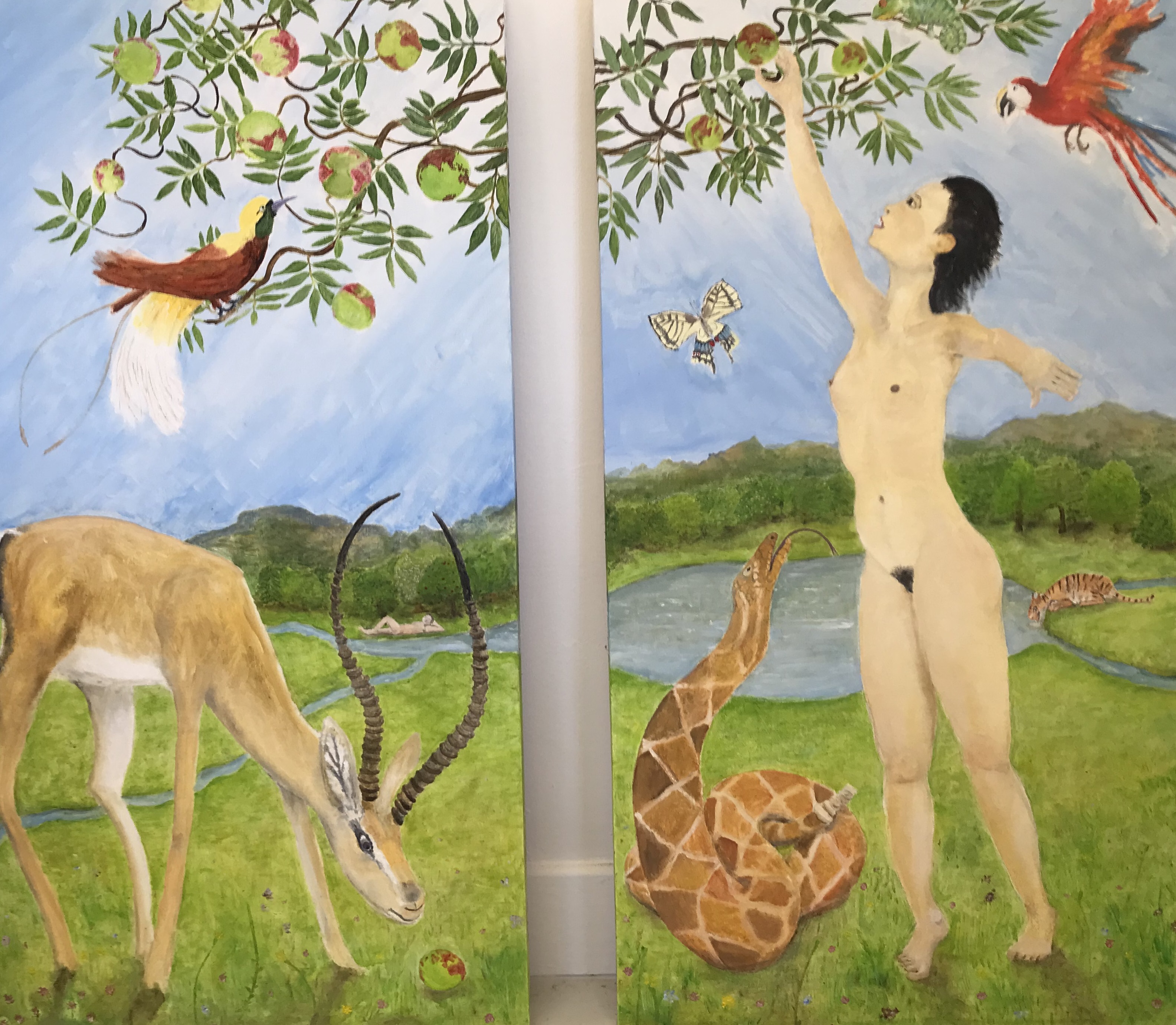
Think you can tell the difference between human paintings and AI images?
Take the Art Gallery Turing Test.
The Artist and the Sausage Machine
1. A painful admission
AI explodes on the public consciousness, and everyone is vastly entertained. But I am indignant and sign up to DALL-E 2 in order to show it for what it is: the destruction of art. I create a simple scenario for the AI to depict: artists, writers and composers are all being hurled into a vast sausage machine by robots. I add that the paintings are to be done in the style of Bosch—I am a huge admirer of the great artist.
I sit back to await results. The AI hums away for about a minute—one of the human-like things about it is that it is not instantaneous—and four pictures appear on the screen. But what is this? In my mind’s eye I have created a scene of horror, but the images generated by AI look positively cheerful, charming even. They are the kind of whimsical absurdities that you could hang on the wall of a child’s nursery without a qualm.
I try again, maybe ’sausage machine’ was too ambiguous, ‘meat grinder’ ought to make things plain. And instead of Bosch I put in Goya—who I also hugely admire even if his ‘Disasters of War’ leave me feeling ill. The AI hums away again, and the pictures are revealed. Oh No! This time they are, if possible, even more innocuous than the ones before.
I feel confused. What is going on? The answer would seem simple: DALL-E 2 has been programmed not to depict violence and cruelty. Given what we humans are like, this is a sensible interdiction. But the real source of my confusion is something I do not want to admit: I actually quite like some of the pictures.

The Artist and the Sausage Machine
2. The appeal of the images
Interesting art can be created though the dialectical clash between artist and censor. The ingenuity and inventiveness required of artists to circumvent censorship—think of the restrictions on Shakespeare—requires them to weave in allusions and metaphors that add richness to their work. Sometimes a whole new artform emerges as a synthesis of artistic intention and censorship—as with the choral concertos of the Orthodox composers who were forbidden to use musical instruments. The images generated by DALL-E 2 were also the synthesis of a dialectical clash, between (1) my instructions, and (2) the censorship of the programmers, with results more engaging than the crude imagery I had originally envisaged.

The Artist and the Sausage Machine
3. Reasons for optimism
The role of censorship in creativity explains why, for artistic as well as moral reasons, I have always been in favour of it, and have been delighted at its recent resurgence in the West in the form of the ‘woke’ cancel culture. I feel sorry, of course, for all the people who have lost their jobs etc., in the same way that I am sorry about all the heretics burnt at the stake in the Middle Ages. But this is the collateral damage we must accept if art is to thrive. We artists should, therefore, be pleased at the censorship built in to AI. There will obviously be a market for an uncensored version, but provided that Big Tech can stifle it and impose its orthodoxy rigidly upon us all, then the bleak vision of the artist cast into the sausage machine may be far too pessimistic, and we may even dare to hope that we are on the cusp of new era of artistic creation!

